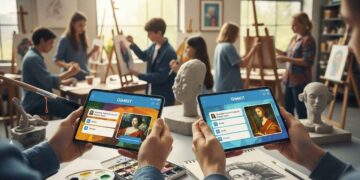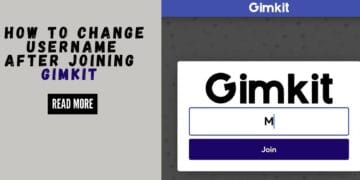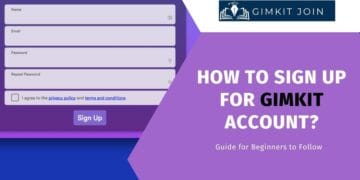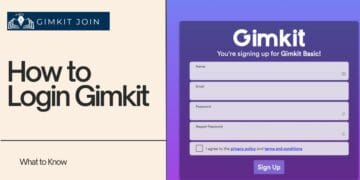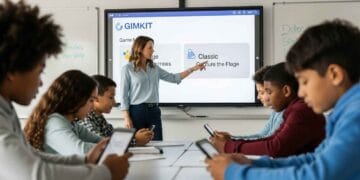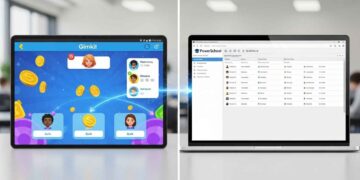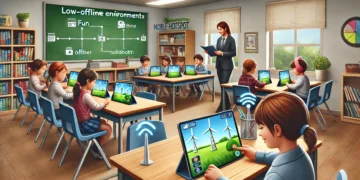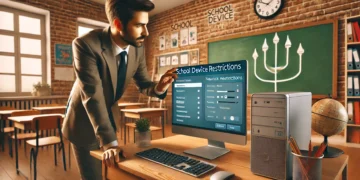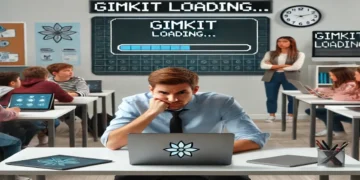Picture this: your students are buzzing with excitement. They’re working together, like super-sleuths. They’re trying to beat the clock. Complex puzzles? They’re solving them! All this fun happens with Gimkit. That’s the cool thing about a Gimkit digital escape room! It changes how kids learn in class. It turns regular learning into an exhilarating adventure. It’s a game-changer for classroom engagement, transforming routine learning into an exhilarating adventure.
We all know Gimkit. It’s awesome for quick quizzes. It’s great for fun review games. It moves fast. It’s interactive. Learning becomes fun. But what if Gimkit could do more? What if it could go beyond simple question sets? What if you used it for tough, many-step challenges? These need kids to think hard. They need teamwork. They need real problem-solving. This is just like a real escape room.
That’s exactly what a Gimkit digital escape room lets you do. It’s a fresh approach to designing Gimkit escape games. Your class becomes an adventure. Every question is a clue. Every right answer shows the next step. It’s seriously good for learning. Kids think deeply. They work better together. They get involved.
This guide will show you how. We’ll walk you through making Gimkit escape games. Your classroom will turn into an exciting learning journey. Every question gives a hint. Every correct answer opens the next part. Get ready to make your teaching even better. You will grab your students’ attention like never before!
What Makes a Gimkit Digital Escape Room Good?
First, let’s talk about what makes a Gimkit digital escape room amazing. It’s more than just a bunch of questions. It’s a story. It has brainy tasks woven right into it.
Parts of a Digital Escape Room
 Think about a real escape room. What pieces make it click? We’ll use those same ideas for our Gimkit version.
Think about a real escape room. What pieces make it click? We’ll use those same ideas for our Gimkit version.
The Story or Theme
A good escape room always has a story. This grabs people. It can be simple. “You’re stuck in the room. Solve puzzles to get out!” It can be fancy. “You’re a detective. Figure out an old mystery!” Or, “Scientists need help. Find the cure fast!” A strong story gives a reason. It adds excitement. It makes Gimkit for immersive learning truly powerful.
Locked Parts & What Opens Them
These things stop you from moving forward. In a digital escape room, a “locked part” might be a Gimkit question. It needs a special code. Or you need to get the last question right in one Kit. This gives you the link to the next Kit. The “keys” are the answers. They are what students figure out. They come from solving puzzles.
Puzzles & Hints
This is the heart of your escape room. These are your tasks based on what you’re learning. They can be riddles. They can be codes. They can be math problems. They can be history questions. Maybe they are about books. Or they are science puzzles. Each puzzle should give a clue. This clue leads to the next step. Or it gives part of the “key.” You’re building Gimkit puzzles. They are about solving things, not just remembering.
One Step After Another
A real escape room moves in order. You finish one step. Then you go to the next. Solving puzzle A gives clue B. Clue B helps with puzzle C. It just keeps going. This feels good. It makes sure students really learn the stuff in the right order. This is key for multi-step Gimkit challenges.
Time Pressure (You can add this)
You don’t always need a timer for learning. But adding one makes things super exciting. Gimkit has timers in some games. They can definitely help here.
How Gimkit Immersive Learning Helps Kids Learn
 It’s not just fun. Gimkit digital escape rooms are really good for school. They are strong gamified learning challenges. Many studies show digital escape rooms make students super interested. They make students want to learn. This creates an active classroom.
It’s not just fun. Gimkit digital escape rooms are really good for school. They are strong gamified learning challenges. Many studies show digital escape rooms make students super interested. They make students want to learn. This creates an active classroom.
Kids Think Really Hard
Regular quizzes often test simple facts. Escape rooms are different. Students must look at information. They have to put ideas together. They find answers from different hints. This helps them truly get better at critical thinking games online abilities.
Teamwork Gets Better
Most escape rooms are for groups. Students must work together. They talk well. They share ideas. They use each other’s strengths. This helps them solve tough tasks. They are great team-building activities for the classroom.
Solving Problems Even When It’s Hard
Gimkit sequential challenges for students help them learn to stick with it. They learn to plan. They break down big problems. They don’t give up. This builds real skills. Virtual escape rooms have been shown to improve learning performance and problem-solving skills across various subjects.
Super High Engagement
The mystery. The challenge. That feeling of winning. All of this makes a Gimkit mystery game so motivating. Students care about escaping. This makes learning memorable. It’s exciting. It taps into our natural love for puzzles. It turns review into a scavenger hunt learning experience.
Making Your Multi-Step Gimkit Challenges
Now for the fun part! This is where you put it all together. Making a Gimkit digital escape room takes some planning. But the students will love it. It’s worth it.
Step 1: Think About Your Story & What Kids Will Learn
 This is your starting point. What do you want students to know? What do you want them to practice?
This is your starting point. What do you want students to know? What do you want them to practice?
What Matches Your Class
Start with your lesson goals. What can you turn into a puzzle? Reviewing fractions? It could be “Escape the Bakery.” You measure ingredients. A history lesson? Maybe “Crack the Code of Ancient Civilizations.”
Good Stories
Make a background story. It should make the class material exciting.
- For History: “You went back in time. It’s the Roman Empire! But your time machine broke. Solve history riddles to fix it. Get back to today!”
- For Science: “A new sickness is here. You are the last hope! Look at facts. Solve biology puzzles. Find the cure!”
- For Books: “Someone stole a special old book! Figure out words from stories. Read texts. Find the thief!”
Step 2: Plan Your Escape Path (Use a Drawing)
 It helps to see how your escape room will flow. Grab a pencil and paper. Or use a computer program for drawing.
It helps to see how your escape room will flow. Grab a pencil and paper. Or use a computer program for drawing.
Straight Path or Branching Out?
- Straight Path: Students finish one thing. Then they go to the next. (Puzzle 1 goes to Puzzle 2, then Puzzle 3). This is easier to set up.
- Branching Out: Students can work on many puzzles at once. All the answers lead to one final “big lock.” This is harder. But students get more choices. For your first Gimkit breakout game idea, a straight path is often best.
“Levels” or “Stages”
How many different parts will your escape room have? Three to five parts usually works well. This is good for a 45-60 minute class. Each part should be a major puzzle. Or it’s a few small puzzles. It always ends by opening the next part.
How Hints Go
How does one answer lead to the next hint or puzzle? This is where it gets cool.
- Example: A math answer in Gimkit gives a number. That number tells you a page in a Google Doc. That page has a hidden word. That word is the answer to the next Gimkit question.
Step 3: Making Gimkit Puzzles Like Locked Doors & Their Keys
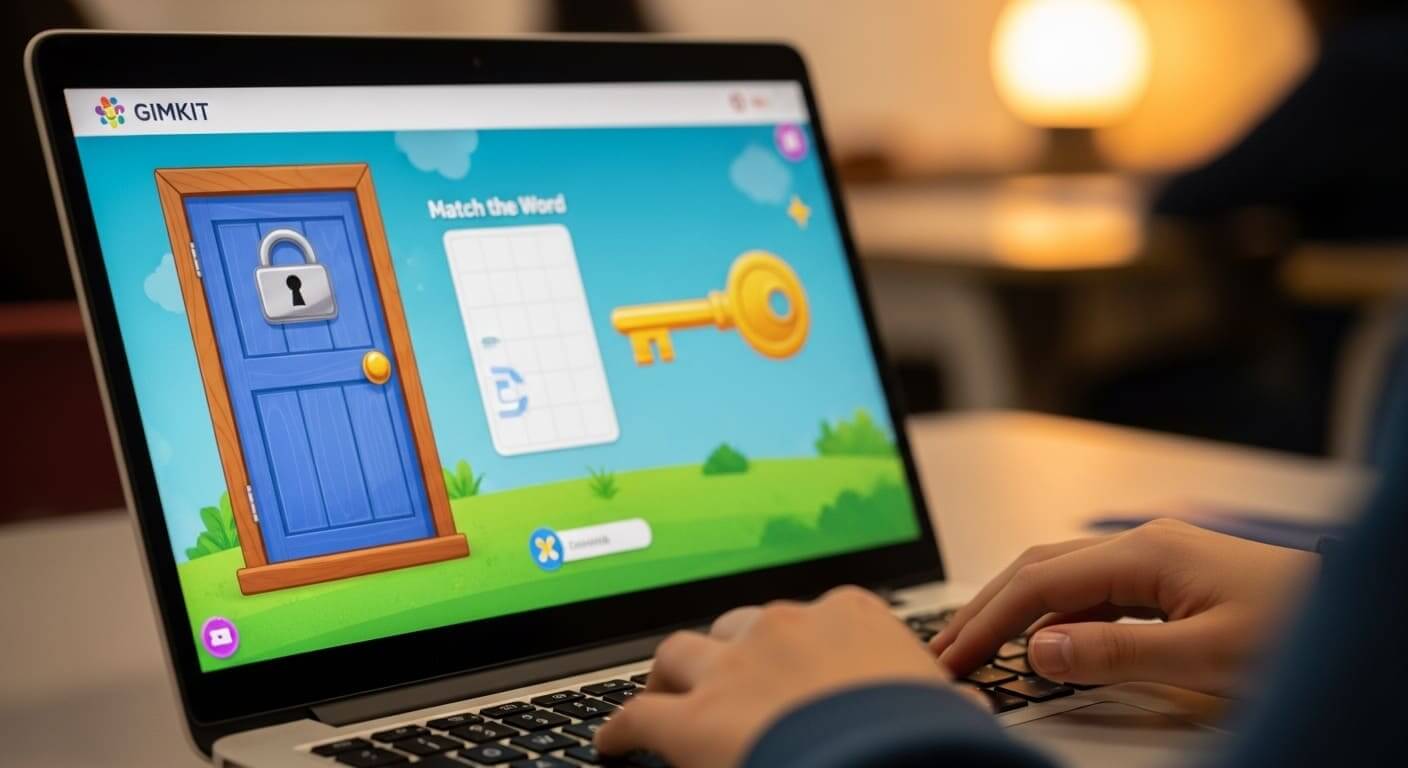 This shows how great Gimkit is. It helps you make Gimkit for problem solving escape rooms.
This shows how great Gimkit is. It helps you make Gimkit for problem solving escape rooms.
Using Gimkit Kits as “Rooms” or “Levels”
The simplest way is to make each “room” or “level” its own Gimkit Kit. These are your multi-step Gimkit challenges.
- How it works: Students finish Kit 1. The right answer to the last question in Kit 1 is a “code.” They need this code to join Kit 2. You will make separate Gimkit games. Each game has its own code.
Making “Locked Parts” Inside Gimkit
- Text Input Questions: Use these for “locked parts.” The question needs an exact code, word, or phrase as the answer. For example, “What is the secret word to get in?” (Answer: MYSTERY). Students can’t move on without typing the right answer.
- Multiple Choice with a Secret “Code”: The right answer choice might have a letter (A, B, C, D). Or it has a number. Or a small detail in a picture. This can be your next hint. For example, if ‘C’ is right, then ‘C’ is part of the final code.
- Question ID as a Hint: Some advanced users might hide a Gimkit question’s special ID number. You see this in the website address when you make a question. Students find that question. It shows them an answer.
Other Hints (You Really Should Add These!)
This makes your classroom escape room online feel real. It’s like a physical escape room.
- Links to Documents or Websites: A correct Gimkit answer could give a link. Maybe it’s a Google Doc. Maybe it’s a Google Site. Or another website. This other place has the next hint or puzzle. For example, the Gimkit answer is “Library.” A linked Google Doc about the library has a riddle. The riddle’s answer is the code for the next Gimkit Kit.
- Hints in the Room: You can use actual things in your classroom. A Gimkit puzzle might say, “Look under the red book on the shelf.” Under the book, students find a QR code. It leads to the next Gimkit game. Or it’s a written hint. This mixes digital and real life. It feels like a breakout edu digital game. You might also want to explore Gimkit integrations with other tools for similar effects.
- Puzzles with Pictures: Use Gimkit’s picture upload. A picture could have a hidden message. It might be tiny text. Or a color code. Or a logic puzzle in the picture itself. Students solve the picture puzzle. They get their answer for the Gimkit question.
Step 4: Making Your Gimkit Kits for the Escape Room
 Each Gimkit Kit for your escape room needs to be built with care.
Each Gimkit Kit for your escape room needs to be built with care.
Making the Questions
Make your questions tricky! They should not be simple memory tests. Students must think about the hints you give. Then they find the answer.
- Instead of: “What year did the Titanic sink?”
- Try: “The year of the famous ship’s end, a number found in the old newspaper clipping, is your next key.” (And the “newspaper clipping” is a picture hint you give somewhere else).
“Story” Questions
Use the question words or descriptions. These keep the story going. “You got the first message! Now, figure out the riddle from the old map. It will tell you the next spot…”
Using Text Input Smartly
As I said, this is super important for “code entry” locks. Make sure the answer is very exact. No extra spaces. Use the right capital letters if they matter.
Using Pictures, Sounds, Videos
Don’t just use words! Gimkit lets you add pictures, sounds, or little videos.
- Pictures as Hints: A picture of a famous old building. Students need to find its name. That’s the answer. Or a map with a place highlighted. The name of that place is the answer.
- Sound Puzzles: A short sound. You need to guess what it is. Or a riddle that is spoken.
Playing Your Gimkit Escape Game & Tips to Win
You made something awesome! Now, let’s make sure it runs smoothly. Let’s make it count for learning.
Getting Ready
Fun Start
Before kids even sign in, read the story. Set the mood. Explain the “rules” of the escape. “You have 45 minutes! You must save the world! Each right answer gets you closer to the cure…”
Making Teams
Put kids into groups. Mixed teams are best. Escape rooms work well when people have different ideas. They have different skills. This makes them great team-building activities for the classroom. 3-4 kids per team is often just right.
Keeping the Game Going
Giving Codes One by One
This is key for Gimkit sequential challenges for students.
- Give out the first Gimkit Kit’s join code.
- A team finishes Kit 1. This means they got the final “locked” question right. Then they get the Gimkit join code for Kit 2. You can give this out yourself. Or you can set up your Gimkit questions. They show the next code when kids get the right answer. For example, the last question of Kit 1 could ask for the “password” to Kit 2. When they type it correctly, a message pops up. It gives the Kit 2 join code.
- You could even use Google Forms. Make it check for a certain answer. If it’s right, it sends them to the next Gimkit link. This makes the “lock” stronger. Learn more about Google Forms functionalities for complex branching quizzes.
A Way to Give Hints
Have a clear way to give hints.
- “Your team gets 3 hints. Use them carefully!”
- “Hints will cost you points!” (If you’re tracking scores).
- Have hints ready for each puzzle. Some hints can be small nudges. Others can be bigger clues.
You, the Helper
Your job changes. You are not just the teacher. You are the guide. Walk around. Watch the teams. Listen to what they say. Give very little help. Only if they really need it. Don’t give answers away! You are there to watch them use their critical thinking games online skills.
Talking About the Challenge Afterward
 The learning doesn’t stop when time runs out. Or when a team “escapes.” Talking about it afterward is super important. It connects the game to what they learned.
The learning doesn’t stop when time runs out. Or when a team “escapes.” Talking about it afterward is super important. It connects the game to what they learned.
Cheer for Success
Say good job to everyone. Not just the winning team. Point out good problem-solving. Talk about creative thinking. Note strong teamwork.
Talk About Hard Parts
Discuss what made some puzzles tough. How did teams figure them out? “Why was that code so hard? How did your group crack it?” This makes puzzle-based learning stronger.
Link to Learning Goals
This is the most important part. Connect the game back to your lesson. “How did finding those old leaders help us understand what happened in the revolution?” “What science ideas did you use to find the cure?” This makes sure the gamified learning challenges truly taught them something.
Last Words
You can make your classroom a super fun adventure. Just create a Gimkit digital escape room. It’s the best way to make multi-step Gimkit challenges. They help kids think hard. They help them work together. They make learning feel real. All while kids are on the edge of their seats.
Don’t be scared to try new things. Don’t just stick to regular quizzes. With some good ideas and a plan, Gimkit can power your next amazing gamified learning challenge. Your students will ask for more! Go ahead and use the power of Gimkit puzzles. Make learning dynamic. Make it fun. Make it truly educational. It’s way better than just flashcards.
Did you make a Gimkit escape room? Do you have a great idea for one? Share your best Gimkit puzzles or success stories below! We love hearing from our awesome teachers.


